Zimbabwe Flag Meaning
Seven horizontal stripes alternating green, yellow, red, black, red, yellow, green with a white triangle at the hoist containing a red five-pointed star and the Zimbabwe Bird, representing the nation's agricultural wealth, mineral resources, blood shed for independence, the African people, peace, and the ancient civilization of Great Zimbabwe.
- Continent
- Africa
- Adopted
- 1980
- Ratio
- 1:2
- Colors
- green, yellow, red, black, white
- Designer
- Unknown
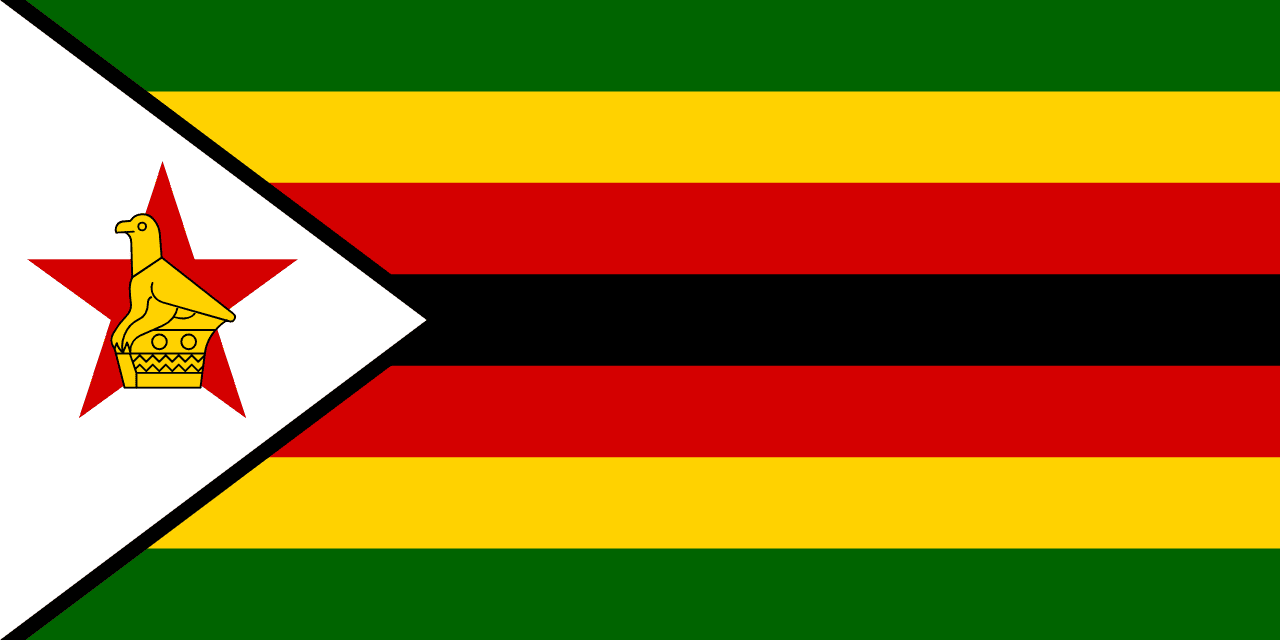
Symbolism
Green Stripes: Represent the agricultural wealth and fertile lands of Zimbabwe, symbolizing the farming that sustains the population and the lush vegetation that characterizes much of the country's landscape.
Yellow Stripes: Represent the abundant mineral wealth of Zimbabwe, particularly gold and other precious minerals that have been mined for over 1,000 years and continue to be important to the economy.
Red Stripes: Represent the blood shed by those who fought for independence from colonial rule, symbolizing the sacrifice of the liberation war heroes and the struggle against racial oppression.
Black Stripe: Represents the heritage and majority population of Zimbabwe, symbolizing the African identity and the indigenous people who have inhabited the land for millennia.
White Triangle: Represents peace and the way forward for Zimbabwe, as well as the minority white population, symbolizing the hope for racial harmony and national unity.
Zimbabwe Bird: Represents the ancient bird sculpture found at Great Zimbabwe ruins, symbolizing the rich cultural heritage and the continuity between ancient African civilizations and modern Zimbabwe.
Red Star: Represents the nation's aspirations for progress and development, as well as the international socialist solidarity that supported the liberation struggle.
History
- 1100-1450: Great Zimbabwe, one of Africa's greatest medieval cities, flourished as a trading center, giving the modern country its name and demonstrating sophisticated African civilization and architecture.
- 1890: The British South Africa Company, led by Cecil Rhodes, occupied the region and established the colony of Southern Rhodesia, beginning nearly a century of white minority rule.
- 1923: Southern Rhodesia became a British self-governing colony with a white-dominated government that implemented discriminatory laws restricting African land ownership and political participation.
- 1953-1963: The Federation of Rhodesia and Nyasaland united Southern Rhodesia, Northern Rhodesia, and Nyasaland under white minority rule, but African opposition led to its dissolution.
- November 11, 1965: Prime Minister Ian Smith's government issued the Unilateral Declaration of Independence (UDI), creating the unrecognized state of Rhodesia to prevent African majority rule.
- 1966-1979: The Bush War (Chimurenga) saw African nationalist movements ZANU and ZAPU fight against the Rhodesian government, with international sanctions weakening the white minority regime.
- 1979: The Lancaster House Agreement ended the war and established a transition to majority rule, with British supervision leading to democratic elections and independence.
- April 18, 1980: Zimbabwe gained independence under Prime Minister Robert Mugabe's ZANU-PF government, adopting the current flag and beginning the post-colonial era.
- 1980s: The Gukurahundi massacres in Matabeleland resulted in an estimated 20,000 deaths as Mugabe's government suppressed dissent in ZAPU strongholds, creating lasting ethnic tensions.
- 2000-2008: Fast-track land reform and economic mismanagement led to hyperinflation reaching 231 million percent, mass emigration, and international isolation under continued ZANU-PF rule.
- 2008-2013: A unity government between ZANU-PF and MDC brought temporary economic stability and constitutional reforms, though political tensions and violence continued.
- November 2017: A military coup removed Robert Mugabe after 37 years in power, bringing Emmerson Mnangagwa to the presidency with promises of economic reform and international reengagement.
- 2018-Present: Despite hopes for change, Zimbabwe continues facing economic crisis, political repression, and international sanctions, with limited progress on democratic reforms and human rights.
Trivia
- Zimbabwe is home to the magnificent Victoria Falls, one of the world's largest waterfalls, known locally as 'Mosi-oa-Tunya' (The Smoke That Thunders) and shared with Zambia.
- The flag represents a country named after Great Zimbabwe, the largest ancient structure south of the Sahara Desert and a UNESCO World Heritage site that demonstrates Africa's rich medieval heritage.
- Zimbabwe has 16 official languages, more than any other country, including English, Shona, Ndebele, and various minority languages, reflecting the nation's linguistic diversity.
- The country experienced the world's second-highest hyperinflation in recorded history, eventually abandoning its currency in 2009 and adopting the US dollar and other foreign currencies.
- Zimbabwe is home to the world's largest man-made lake by volume, Lake Kariba, created by damming the Zambezi River and providing hydroelectric power to the region.
- The flag flies over a country with significant wildlife conservation areas, including Hwange National Park, which hosts one of Africa's largest elephant populations.
- Zimbabwe has a rich tradition of stone sculpture that has gained international recognition, with artists like the Takawira family creating works displayed in museums worldwide.
- The country was once known as the 'breadbasket of Africa' for its agricultural productivity, particularly in maize, tobacco, and cattle farming, before economic decline.
- Traditional music includes mbira (thumb piano) performances that are central to Shona spiritual practices and have influenced contemporary Zimbabwean popular music.
- The flag represents a country where the majority of the population practices Christianity, often blended with traditional African religious beliefs and ancestor veneration.
- Zimbabwe's education system was once considered among Africa's best, achieving high literacy rates, though economic problems have caused significant deterioration in recent decades.
- The country has significant mineral wealth including gold, platinum, diamonds, and chrome, though political instability has limited foreign investment and development.
- Traditional architecture includes the distinctive round houses with thatched roofs found in rural areas, adapted to local climate and building materials.
- The flag represents a nation where cricket and soccer are popular sports, with Zimbabwe having competed in international cricket and produced several world-class players.
- Despite economic and political challenges, Zimbabwe maintains a vibrant cultural scene with literature, music, and arts that address both traditional themes and contemporary struggles.
Related Countries

Botswana
Africa
Light blue field with a central black horizontal stripe bordered by thin white stripes, representing the life-giving rains, racial harmony, and the zebra that symbolizes the coexistence of black and white people in peace.
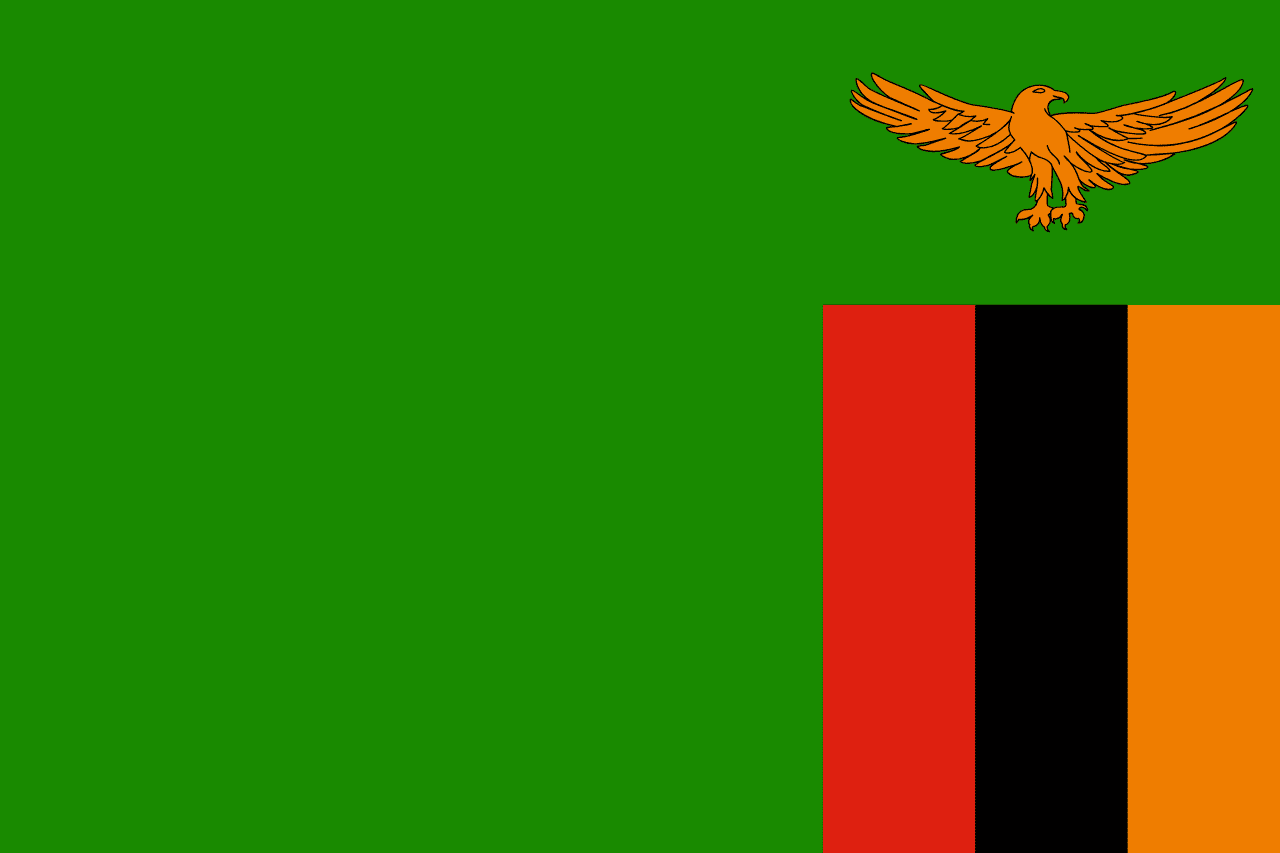
Zambia
Africa
A green field with three vertical stripes of red, black, and orange in the lower right corner and an orange eagle above the stripes, representing the country's natural wealth, the struggle for freedom, the African heritage, the mineral wealth (particularly copper), and the ability to rise above problems.
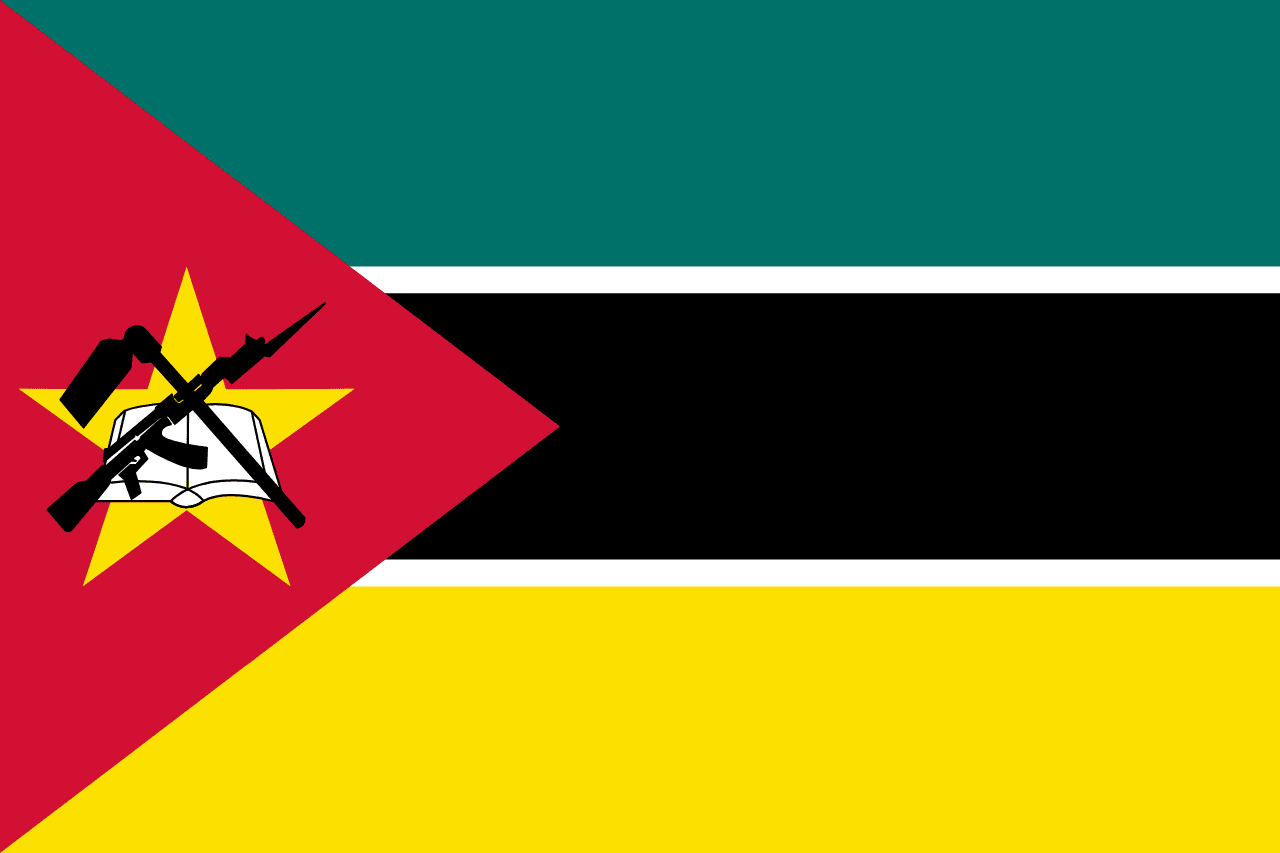
Mozambique
Africa
A horizontal tricolor of green, black, and yellow, separated by white fimbriations, with a red triangle at the hoist bearing a yellow star, a book, a hoe, and an AK-47 with bayonet. The flag uniquely features a modern weapon as a national symbol.
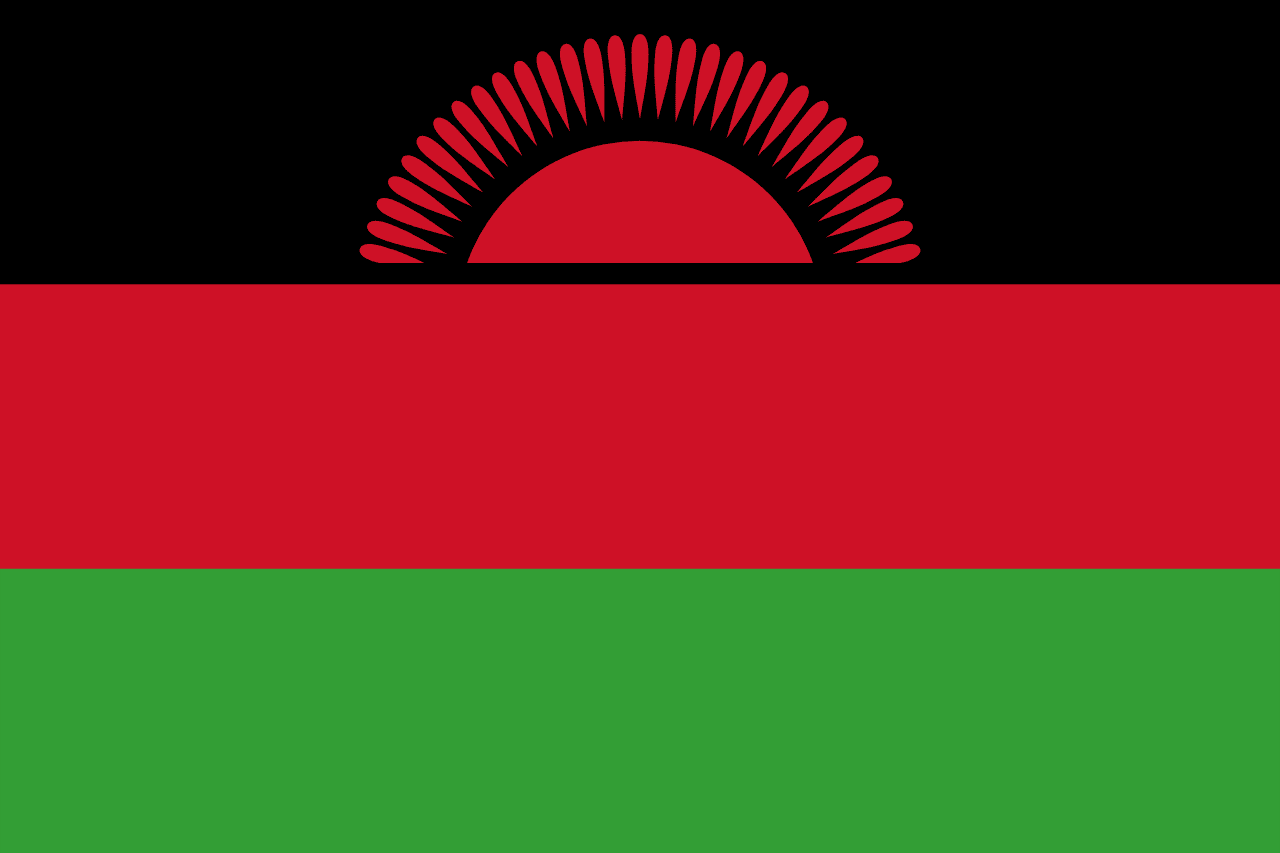
Malawi
Africa
Three horizontal stripes of black, red, and green with a red rising sun in the upper left corner, representing the African people, the blood of freedom fighters, the land's fertility, and the dawn of freedom and hope.
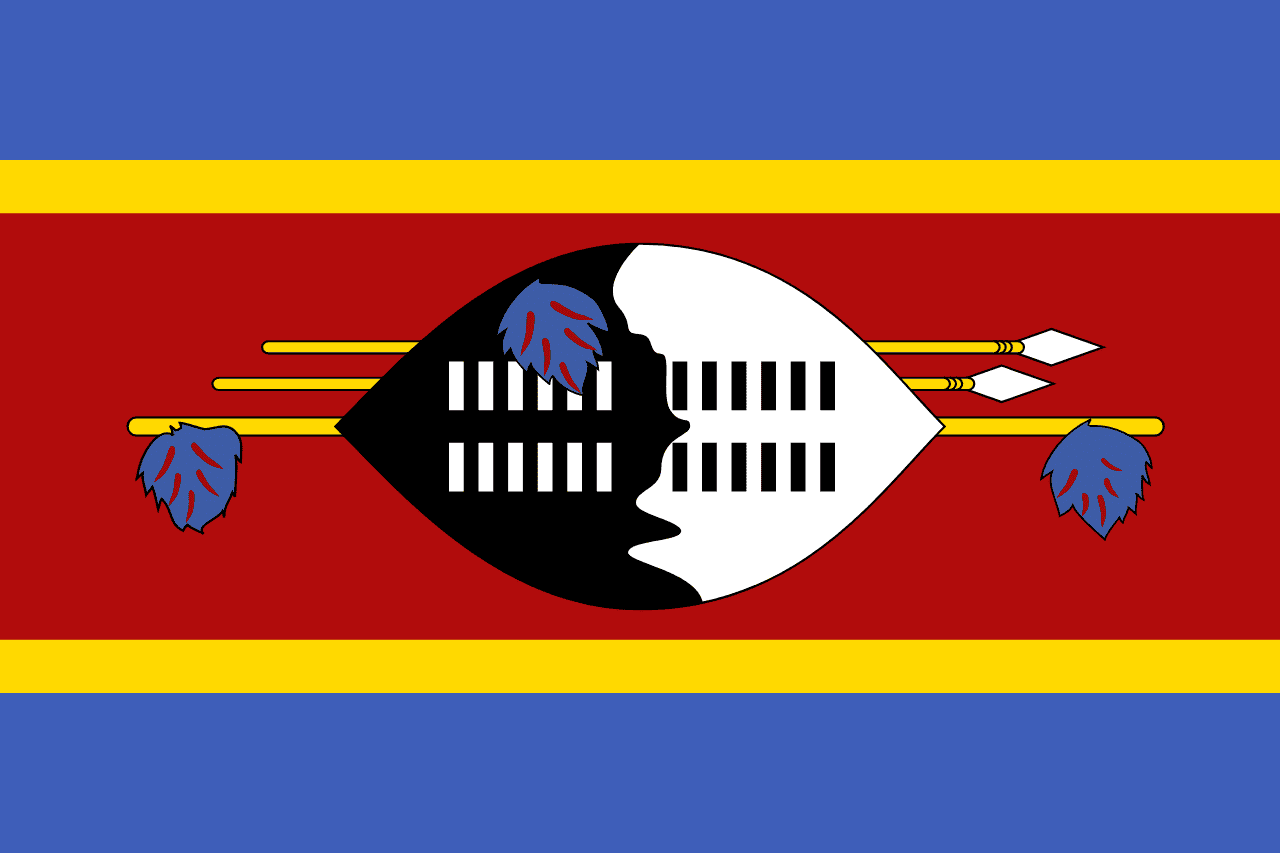
Eswatini
Africa
Five horizontal stripes of blue, yellow, red, yellow, and blue with a traditional Swazi shield and two spears overlaid on the center red stripe, representing peace, mineral wealth, past struggles, and the protection of the kingdom.
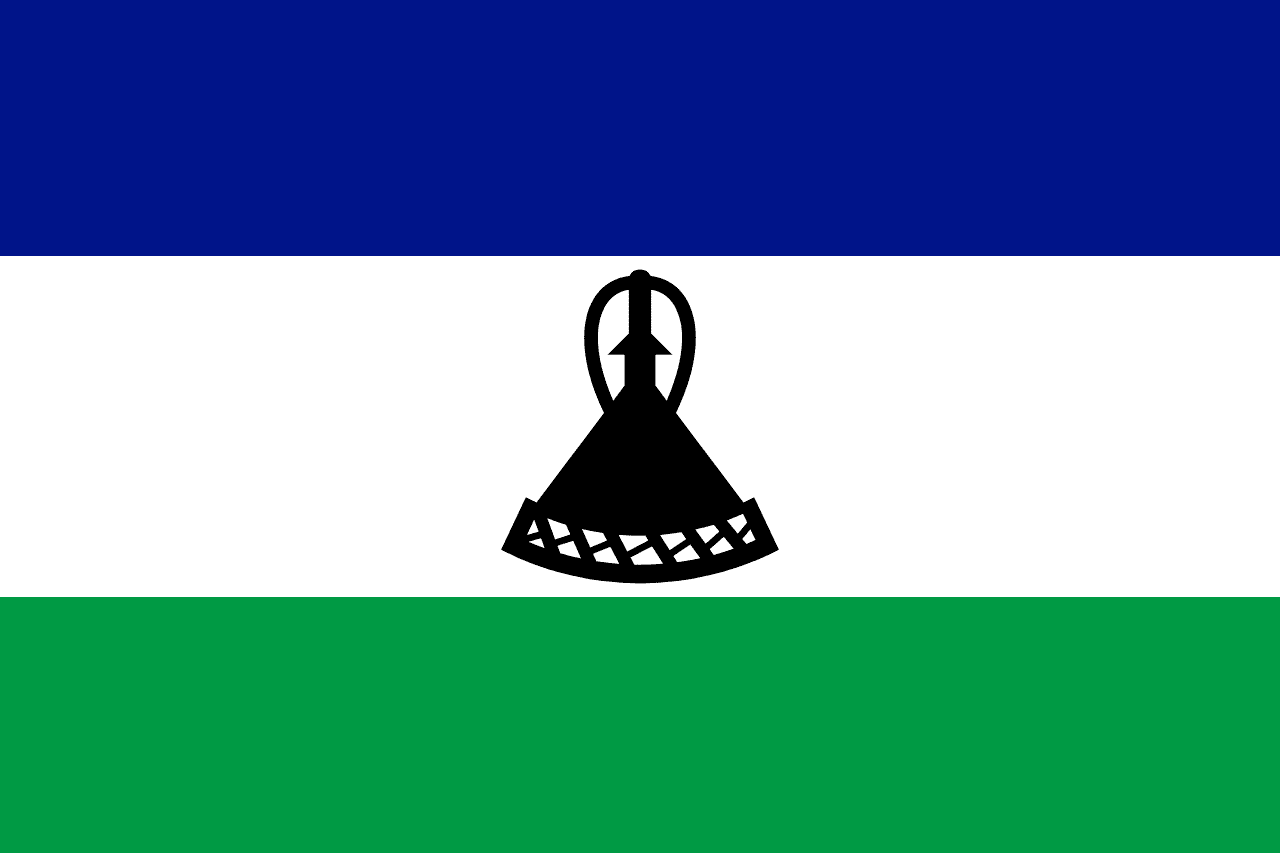
Lesotho
Africa
Three horizontal stripes of blue, white, and green with a black traditional Basotho hat (mokorotlo) centered on the white stripe, representing peace, rain, prosperity, and the cultural heritage of this mountain kingdom completely surrounded by South Africa.